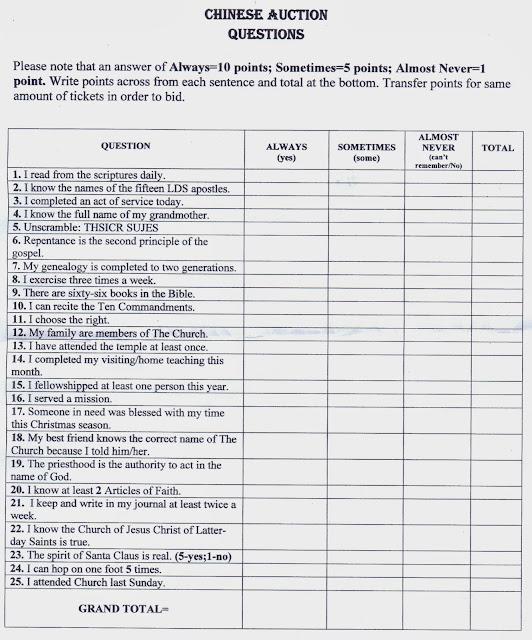Who'd have thought back to Trinidad?
On January 13, 2014 we left Barbados to go to Trinidad. There we participated in training volunteer technicians to assess and fit people for wheelchairs that are donated by the Church of Jesus Christ of Latter-day Saints.
"We're leaving on a prop plane -----"
LIAT planes lined up outside the terminal in Barbados,
The view of Port of Spain Trinidad near the Hilton Hotel where we stayed.
The wild parrots in the treess by the hotel made it sound like the jungle.
Steve Spencer teaching the volunteers.
Who'd of thought Sister Moore would look so good in a wheelchair
Sister Moore watching the trainees learning to go down a ramp.
This young man got his very first wheelchair. He sure looks happy, doesn't he?
He got a wheelchair that is called a rough rider. The chair is designed to accommodate a person who is very active and the chair works very good outside on rough ground.
One of the trainees getting their certificate.
Stephen Spencer, Mirika, President Gould.
Group picture of the trainees.
Elder Moore was behind the camera or getting wheelchairs out of boxes and putting them together.
This type of event makes all the work worthwhile. We enjoyed all 4 days and learned a lot. We learned how to fit someone to a wheelchair so that they are comfortable and so they are not further debilitated by the chair.
Article
in the Trinidad Guardian Newspaper
Feel
brings relief for wheelchair users
Published:
Monday,
January 27, 2014
Carers
from NGOs across T&T practise mobility skills during wheelchair-fitting
training at a three-day workshop at the charity, Feel. PHOTO COURTESY FEEL
The
things wheelchair users go through: bumpy pavements, steep ramps and steeper
hills, a lack of step-free access to public buildings. Not to mention the
physical aches and pains one’s body goes through.
Last
week, a group of carers and volunteers from community groups across T&T had
the opportunity to experience what it’s like to be in a wheelchair and, more
importantly, received training on measuring and fitting wheelchair to their
users to prevent further damage or debilitation due to ill-fitting
chairs.
At
a three-day workshop at the headquarters of Foundation for the Enhancement and
Enrichment of Life (Feel), organised by director Elena Villafana-Sylvester and
run by the Church of Jesus Christ of Latter Day Saints (LDS), they learnt the
fundamentals, stipulated by the WHO (World Health Organization).
“Previous
to this (ruling by the WHO), you just came, you sat in a chair and you took
that wheelchair home,” says Villafana. “It could be the wrong size. It could be
too short for your back. If it was too tight it could rub against your legs and
cause you to develop sores. If it was too wide then you could be moving around
in the chair, impacting your spine.”
After
training from physical therapist Steve Spencer of the LDS, the volunteers were
certified to measure, build and fit brand new wheelchairs, 350 of which are
supplied by the LDS, the Mormon church based in Utah, every year.
Receiving
the training were representatives of NGOs from all over T&T. Toco Helping
Hands, Cedros Community Group, New Vision Ministries in Diego Martin, Paradise
Hill Women in Action from Blanchisseuse, Eldamo bus drivers and the Tobago
Empowerment Foundation and In The Mean Time from east Trinidad.
They
take it in turns to sit in and ride a wheelchair while the group listens and
responds to their physical requirements.
“An
important part of the training is for you to understand what is comfortable,”
Villafana says, “so you can identify issues.”
One
hundred and twenty wheelchairs were distributed between January and October
2013 to people who required them due to illness, accidents, crime and
ageing.
Anybody
who acquires a wheelchair from Feel is guaranteed it will fit correctly and
function properly. But to qualify for a free wheelchair you must come from what
Feel describes as “the poorest of the poor.” If someone can afford to buy their
own wheelchair they must go to Pharmco or AA Laquis.
To
qualify for a Feel chair, applicants must complete a socio-economic assessment
form with their age, address, type of dwelling, employment status, utility
bills, whether they rent or own, number and age of any children, payslips and
government subsistence documents.
Villafana
finds an application form at random. “This person lives in a wooden house,
single-storey, that they own. They are a pensioner and it’s in Country Trace,
Fanny village, Point Fortin. That’s rural. The utility bill is low. He probably
has a very basic household, he’s certainly not using internet and a/c. …This
one is a big yes, stamp.”
As
the care workers finish their short lunch break and head outside, steering
their wheelchairs down a long ramp at the Fernandes Industrial Estate compound
in Laventille, they are beginning to experience exactly what disability can
mean.
Janice
John of In The Mean Time slowly ascends the ramp but ends up doing a 180-degree
spin and rolling back down. Desmond Baldeo, a young bus driver for disabled
children and the elderly, says, “Common sense told me wheelchairs were
adjustable, but I didn’t know the importance of it.”
Spencer
explains, “Wheelchairs can be like a pair of ill-fitting shoes. If they’re not
comfortable they won’t get used and become discarded. They would rather not use
their wheelchair. If carers are skilled and trained, then it improves the
quality of utilisation a great deal.
The
next day, a real-life exercise is carried out. Twenty-five recipients come to
Feel to receive wheelchairs and the trainees have their first opportunity to
evaluate, assess and distribute properly-fitted chairs.
“When we leave,” says
Spencer, “we’ll leave Trinidad in good hands.”
On 18 Jan 2014 we once again bid Trinidad goodbye.
Now back to Barbados our Home Sweet Island Home.











.JPG)






















